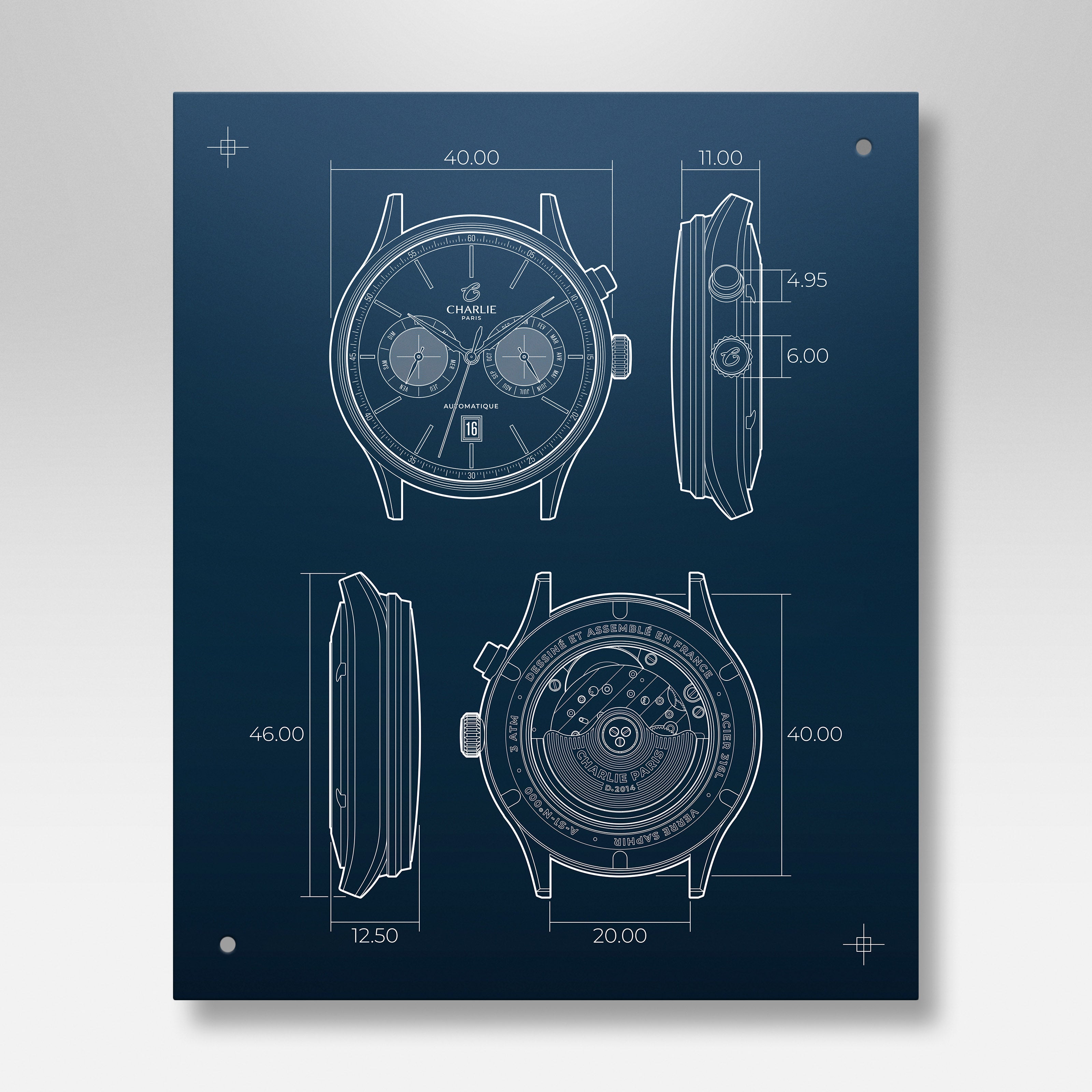
Moon phase and day/night complication: what are the differences?
Watchmaking is an art of time, a subtle dialogue between technique and aesthetics. Among the complications that fascinate amateurs and collectors, the moon phase display and the day/night complication occupy a special place. Celestial poetry on one side, functional reference on the other, these two indications tell the story of the passage of time differently. Today, the Charlie Paris team invites you to delve into the history and subtleties of these two watch complications. From their fascinating origins to the mechanisms that drive them, let's discover together how they translate the movement of the stars on the wrist.
The moon phase complication: an echo of astronomy
The moon phase complication is a watchmaking device that tracks lunar cycles directly on the dial of a watch. It is based on a rotating disk that represents the moon and its different phases, from crescent to full disk, over a 29.5-day cycle. Depending on the model, this disk can offer a more detailed representation, sometimes even with a dual-hemisphere display, to reflect the southern and northern lunar phases. Its mechanism is designed to evolve over time, and some advanced models, such as the perpetual moon phases, can remain accurate for over 100 years. This system evokes a poetic connection with nature and allows the wearer to follow the cosmic rhythms of the sky.
The history of this complication dates back to Antiquity, when the moon was a fundamental reference point for measuring time, particularly in the lunar calendars used by early civilizations. In the Middle Ages, it was integrated into astronomical clocks, allowing sky observers to follow the lunar phases precisely. This device was then miniaturized and appeared on pocket watches in the 19th century, before finding its way onto modern wristwatches.
Today, the moon phase complication remains one of the most admired in watchmaking, appreciated as much for its aesthetic beauty as for the precision of its operation. It embodies a watchmaking heritage combining tradition, science and celestial poetry.
The day/night complication: a simplified reading of time
Less ancient than the moon phase, the day/night indication was born from a more functional need. It appeared in particular with the development of time zone watches and 24-hour displays. This complication clearly indicates whether the time displayed corresponds to day or night, a useful reference for travelers or those who live to the rhythm of the world.
The mechanism is based on a disc, illustrated with a sun and a moon. Its integration into a watch adds an aesthetic dimension and brings a subtle visual movement to the dial.
Moon Phase Alliance: precision in the service of poetry
Our Alliance Moon Phase collection embodies watchmaking excellence with a Franco-Swiss Soprod C105 automatic movement, incorporating a precise perpetual moon phase over 122 years and 51 days. Unlike conventional moon phases, this mechanism limits disruptions and offers absolute fidelity to lunar cycles.
Its sandblasted dial reveals the moon in a double hemisphere display, with Super-LumiNova® transfers that make the stars shine in the dark.

Sully Moon Phase: elegance and finesse
Designed for those looking for a refined watch, the Sully Moon Phase for women adopts a refined design with a subtle interpretation of this complication. Powered by a quartz movement, it offers a precise and poetic display of lunar cycles while remaining accessible and easy to wear on a daily basis.

The day/night indicator: a clear and elegant reading of the time
Featured in our Initial Day/Night , this complication differentiates day from night with a two-tone disc. This mechanism, powered by a Citizen Miyota Calibre 9132 automatic movement, ensures intuitive time reading. The day/night disc is positioned alongside other useful functions such as the date display, power reserve indicator and hour, minute and second hands. Perfectly balanced, this 40mm diameter watch embodies modern elegance with its 316L steel case and sapphire crystal. Built to last, it is equipped with shock absorbers and a 40-hour power reserve, making this watch a reliable and refined companion

Which complication to choose?
The choice between a moon phase watch and a day/night watch depends on your preferences and your relationship with time. The moon phase is an invitation to contemplation, an echo of natural cycles, perfect for lovers of watchmaking and poetry. The day/night indicator is more functional, providing an intuitive reading of time while adding a refined aesthetic touch.
At Charlie Paris, we have designed these timepieces to reflect different visions of time, combining technicality and emotion. Whether you are drawn to the magic of the moon or the clarity of day, there is a watch made for you.












Leave a comment
This site is protected by hCaptcha and the hCaptcha Privacy Policy and Terms of Service apply.